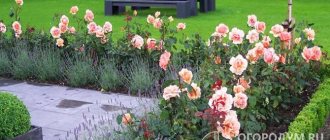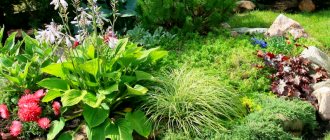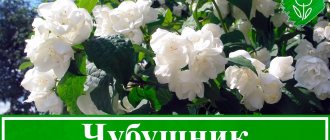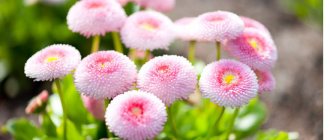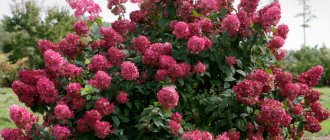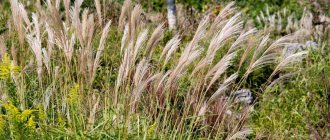Clematis is an interesting plant that is increasingly found on the plots of both amateur flower growers and masters of this craft. There are many species of this flower in the world, each of which is good in its own way, but the most common is small-flowered white clematis stinging. This article is dedicated to him.
Appearance and characteristics of the plant
Stinging clematis is a small-flowered shrub, the vines of which are capable of entwining an area 5 m high and 4 m wide. It is noteworthy that the shoots themselves, as they grow, entwine nearby structures. As a result, nondescript walls or a fence turn into an elegant green carpet with beautiful buds.
The leaves of this species are small, dark green, oval in shape. Each vine produces up to 400 buds. When fully expanded, they look like stars. The buds themselves are small, even when opened their diameter is no more than 3 cm. Such an unusual plant with small white flowers looks great both when planted alone and as a background for other plants.
Bush clematis also looks attractive when decorating gazebos. It can be combined with other varieties that have contrasting flower colors and the same flowering period.
Origin and properties of the flower
In the wild, stinging clematis is found in forest edges, hillsides and undergrowth. The length of its shoots reaches 5 m. Under natural conditions, the plant can be found in Transcaucasia, Asia, Africa and the Mediterranean part of Europe.
During flowering, clematis produces a pleasant honey-vanilla aroma. Liana is a honey plant. After flowering, it is covered with large reddish-brown seeds, giving the bush a decorative appearance until autumn. In warm climates, stinging clematis only partially sheds its leaves at the end of the growing season . In harsh conditions, the entire above-ground part dies off in the fall, and with the onset of warmth, growth begins from the tillering point. Thanks to this feature, burning clematis easily tolerates even severe winter frosts.
Advantages and disadvantages of use in landscape design
Burning clematis is widely used in landscape design. Most often it is used as a cover plant for various supports. A straight white cascade can cover an unattractive wall or fence, and also become a decoration for a gazebo. You can plant the vine near trees so that it entwines their trunk. It is important to remember that the lashes will have to be tied up first, since they are not capable of wrapping around the support on their own.
By shaping the bush and directing the vines, landscape designers sometimes work wonders. Burning clematis becomes like a white cloud, enveloping windows, arches and entrances. The ideal complement for it are climbing roses, honeysuckle or wild grapes.
The advantages of the vine are its unpretentiousness, suitability for molding and high decorative qualities. Disadvantages include a short flowering period and the need to remove dead vines at the end of the growing season when grown in a northern climate or in the middle zone.
Use in landscape design
Small-flowered clematis are ideal for creating small garden arrangements. With their help you can decorate a pergola, a wicker or metal arch, or a lattice fence. It is not necessary to plant vines in a continuous wall, because this option is more suitable for varieties with large buds.
White clematis looks beautiful against the background of red brick, dark wood, and metal. Even after flowering has ended, lush greenery will decorate the area. With timely pruning, the plant retains its decorative appearance until frost. A lush white-green vine can become a background for more compact flowers: roses, lilies, hydrangeas. Next to the white variety you can plant blue clematis with buds that resemble small bells. It also looks beautiful next to shrubs: jasmine, purple or white lilac, rose hips. Large white clusters contrast beautifully with the yellow-golden acacia inflorescences. An interesting background will be decorative greenery: hops or maiden grapes.
Necessary conditions for growth and flowering
Burning clematis is not a capricious crop that requires increased attention. But in order for its decorative qualities to reach the maximum level, certain requirements must be met:
- planting work should be done in March or September;
- for planting, choose a place completely protected from wind and drafts;
- The size of the planting hole should be 60 x 60 cm.
The plant needs good lighting, but excess sunlight also negatively affects its condition. The liana does not tolerate overheating of the soil, so it is recommended to plant the soil around it with dense or ground-covering annuals.
See also
Description and pruning group of clematis variety Nellie Moser, planting and care rules
Read
Pruning rules
Throughout the season, plants are constantly cleaned of dried and broken shoots. But their autumn pruning is especially important.
- Clematis blooms mainly on new shoots, so in the fall you need to cut off its entire above-ground part with a long and thin knife, leaving only a couple of nodes. This pruning of clematis makes it easier to care for in winter.
- After this, the plants are hilled to a height of 10–15 cm with mulch or dry soil.
- Then they are covered with a box or a layer of peat, sawdust or dry leaves.
- They complete the winter protection of plants by covering them with film on top. In this case, it is necessary to leave holes on the side for ventilation.
Planting multi-flowered clematis
Simple rules of agricultural technology allow gardeners to grow white small-flowered clematis on their own plot. You just need to choose the right place, plant the vine and provide it with further, simple care.
Deadlines
Planting of burning clematis is planned for the first month of spring or autumn. These dates may vary depending on the growing region. In any case, in the spring the vine should be planted before the buds begin to swell. In autumn, work is carried out during the dormant period of clematis, but no later than the beginning of October.
Preparation of the site and planting material
Clematis pungent can grow in one place without transplantation for up to 30 years. Plant the plant near a gazebo, outbuilding, gazebo, fence or arch. The place should be protected from winds and well lit. At the same time, you cannot plant the vine in the very sun. In hot climates, you can place the clematis in partial shade.
Stinging clematis prefers loose and light soils with a large supply of nutrients for cultivation. The acidity should be low or neutral. If the soil on the site is acidic, then before planting the vine, a small amount of lime should be added to it. The ideal option for clematis are loams and sandy loams.
Stinging clematis should not be planted in lowlands or wetlands, as well as in places where groundwater lies close to the soil surface. Such conditions contribute to root rot and plant death. During the long rainy season, experienced gardeners recommend scattering wood ash under the bush.
It is recommended to dig a planting hole for clematis in advance. Its depth and width should be 60 cm each. After this, prepare a nutritious soil mixture consisting of garden soil, wood ash, superphosphate, peat and humus. Just before planting clematis, the soil is shed with a weak solution of potassium permanganate. It is important not only to properly prepare the site and planting hole, but also to choose a seedling. To do this, it is examined, paying special attention to the following points:
- clematis should not have mechanical damage;
- the seedling should not show signs of disease or pest damage;
- the root system must consist of at least 5 roots;
- an autumn seedling must have 2 shoots, and a spring seedling must have at least 1.
Clematis that are 2 years old and have a closed root system take root best. Before planting, it is recommended to trim the shoots, leaving no more than 5 buds.
Direct drop off
Stinging clematis is planted on the site at the very beginning of autumn or early spring. In cold climates, spring planting is preferable, and in the south - autumn planting. A support is installed in a hole prepared in advance and a drainage layer of any available material is poured onto the bottom:
- broken brick;
- crushed stone;
- sand;
- expanded clay;
- pebbles
Fertile soil is poured over the drainage layer in the form of a mound, on which the clematis is placed, carefully straightening the roots. The seedling is covered with earth so that the root collar is located below the soil level. Something similar to a funnel is formed around it. The plant is watered abundantly and mulched with peat. In the first weeks, clematis will require light shading, which can later be removed.
Reviews from summer residents
Irina, 61 years old, Moscow region
I have long wanted a small-flowered species of clematis, but the prices for seedlings are so high that I put off the purchase for several years. The year before last, I couldn’t resist: I ordered a “burning” one by mail. In the first summer it did not bloom, only grew several stems about a meter long. But in the second year I already had a small blooming “cloud” with an absolutely incredible aroma. The plant turned out to be very cute and completely problem-free. When I was very young, I carefully watered and fed it, but last summer I had to leave the dacha for two weeks in the very heat. I was very worried about the clematis, I was afraid that it would dry out without watering. However, everything worked out well: even the leaves didn’t wilt on it. It's a good vine, there's very little work to do with it. And before winter there is no need to prune or cover. Overall, I'm pleased with my purchase.
Victor, 55 years old, Kursk
Clematis stinging has been growing on our site for more than 15 years (inherited from the previous owners of the dacha). The blank western wall of the house is completely covered in summer, as if a white blanket is hanging. There are practically no worries with it: in the fall, remove the dry mass of branches and leaves, and in the summer, make sure that the bush does not thicken. We only water it when there is a major drought, feed it occasionally, and that’s it. There is always a sea of seeds on the bush, they look very beautiful. Several years ago, we began to notice that in the spring they sprout “self-seeding” both on our site and on the neighboring ones. So now we have our own planting material, and without any hassle. We plant them along the fences and give them to friends.
Margarita, 57 years old, Ryazan
A seedling of this species was given to me 5-6 years ago. We bought it as Manchurian, but it turned out to be hot (there was a re-grade). At first I was upset, but now I don’t regret it. The flowering bush is simply amazingly beautiful! I have a red climbing rose growing near the gazebo. It looks very cool, and the aroma during flowering is such that bees swarm around the area all day long. Now I want to make clematis layering. Then I’ll plant them near the fence so that in the summer it will be beautiful there too. You rarely see such a decorative and easy-to-care vine. I recommend to everyone!
How to care for a plant
Proper care of burning clematis is the key to abundant and beautiful flowering. In the process of growth and development of a vine, it may require not only fertilizing and watering, but also the formation of a bush, correction of light levels, garter, and preparation for winter.
Watering and fertilizing
When watering stinging clematis, a strict balance should be maintained and excessive soil moisture should not be allowed. Otherwise, the roots may rot and the vine will die. When watering, they try to pour water under the root, without irrigating the stem and leaves. If clematis is planted next to the roof and rainwater flows under it, then you need to constantly monitor the soil moisture. If necessary, sprinkle the ground with any moisture-absorbing substance (for example, ash). It should be borne in mind that young seedlings require more moisture than already formed bushes.
During the formation of clematis, it is fed monthly with organic matter or minerals. You cannot apply all the fertilizers at once; you should alternate organic and mineral components every month. Fertilizers are applied immediately after watering so that they are evenly distributed and quickly absorbed by the vine.
Trimming and shaping
In many ways, the appearance of burning clematis depends on the correct pruning and shaping of the bush. The first pruning is done before planting, thus stimulating the growth of shoots. Young shoots need to be pinched. To extend the flowering period, a group of side shoots that do not affect the appearance of the plant are partially pruned. In the fall, all shoots are cut off, since with the onset of cold weather they die anyway, and in the spring new ones are formed.
See also
Description of clematis variety Piilu, planting and care rules, pruning group
Read
Tying up
Clematis stinging requires a mandatory garter, since initially it is not able to braid a support on its own. First you need to make a frame of the required size and shape. To make it convenient for the vine to weave around the fence, its cells should not be more than 1.5 cm wide. The lashes are tied with pieces of twine or thin fabric rope.
Mulching and loosening
As clematis grows, the soil around it must be loosened after each watering or heavy rainfall. At the same time, weeds and other growth that takes away nutrients from the vine are removed. Experts recommend mulching the soil around clematis with peat or mowed dried grass.
Protection from pests and diseases
Stinging clematis is rarely exposed to diseases or pests, but under unfavorable conditions the vine can be affected:
- rust;
- gray mold;
- wiltom;
- powdery mildew.
When the first signs of the disease are detected, the affected shoots must be immediately removed and the bush treated with preparations specially designed for this purpose. To repel pests, calendula or marigolds are planted next to clematis. Their specific smell will repel insects, and the flowers themselves will become an additional decoration of the site.
Preparing for winter
Burning clematis overwinters well in open ground without special preparation. Its above-ground part dies off with the onset of cold weather, and the root tolerates even severe frosts and forms new shoots in the spring. In the fall, it is recommended to immediately trim the vine almost to the very root, leaving stumps of about 2.5 cm. If the winter has little snow, then you can cover the plant with fallen leaves or spruce branches.
Growing seedlings
Growing clematis from seeds is possible only in the case of species specimens. Varietal varieties are bred vegetatively.
Methods for increasing germination
In order to speed up the growth of seed and obtain strong seedlings, gardeners use various processing methods:
- Soaking. For 5-10 days, the seeds are kept in liquid at room temperature. In this case, the water must be changed every 5-6 hours.
- Washing. The method is similar to the previous one, only the seed material is placed in running water.
- Bubbling. The seed is stored for 40-50 hours in a container with liquid, through which air is passed through a compressor. In the case of a two-step procedure, it is first bubbled for 5-6 hours in a soda solution (1 tsp baking soda per 200 ml of water). Next, place it in a clean liquid, which is recommended to be changed every 8 hours.
- Stratification. Containers with seeds are stored for 14 days at a temperature of about +20 ℃. Then they are placed in a cool place with a temperature not exceeding +5 ℃ for 1.5-2 months.
- Scarification. The seed is soaked for a couple of days with periodic water changes. Then the skins are removed and only the inner kernels are sown.
- Use of growth stimulants. It is necessary to soak the seeds for at least half an hour in solutions prepared according to the attached instructions.
These methods can be used individually or in combination.
Planting seeds for seedlings
Successful growth of seed requires step-by-step adherence to several rules:
- Containers for seedlings must be treated with a disinfectant. The soil must be sterilized. Before watering, boil and cool the water. Thanks to these measures, the likelihood of germination increases.
- The prepared pots are filled ¾ full with sand and black soil in a ratio of 1:2.
- Seed material is laid out on the moistened mixture, which is covered by 1-2 cm with the same composition. The top layer also needs moderate watering.
- To maintain the humidity and optimal temperature necessary for germination, the sown areas are covered with glass containers.
Reproduction
Stinging clematis reproduces by seeds, layering, petioles or division of an adult bush. Seeds can be sown both in open ground and in a greenhouse. In the first case, they are sown in early April, and in the second, in November. The seed is planted in a mixture of earth and sand in equal proportions, and covered with peat on top, the layer thickness of which should be no more than 2 cm. To propagate clematis by dividing the bush, you need to carefully dig up the old plant and divide it into parts, which are immediately planted on new place.
Side shoots are used as layering for propagation. They dig grooves near them and carefully place them there. After this, the branches are pressed with staples and sprinkled with earth. A year later, the young bushes can be separated from the mother clematis and planted in a permanent place.
Clematis cuttings should be treated with a root formation stimulator to make them take root more easily. The soil temperature during the rooting process should not drop below +18 °C. Until the planting material takes root, it must be protected from direct sunlight.
Growing seedlings
Caring for young clematis comes down to removing weeds, watering, regularly loosening the soil and hilling up the root zone to protect it from overheating. Plants planted in open ground are given shading until they have 3-4 pairs of leaves. At this point, the tops of the shoots are usually pinched to enhance the tillering of the vines. During the first growing season, plants are fed 2-3 times with a solution of complex fertilizer.
Clematis seedlings prepared for planting in a permanent placeIn autumn, seedlings are prepared for wintering: the stems are cut, leaving no more than 3 internodes. For most varieties, the area above the roots is mulched with a mixture of clean sand and wood ash. If there is a threat of freezing, an air-dry shelter is built over the bushes.
Clematis grown from seeds can be planted next fall or even in the spring if they have overwintered in a greenhouse. However, according to the majority of breeders, seedlings that were grown in open ground compare favorably with “greenhouse” specimens in many ways.
The time it takes for vines to reach full decorative quality depends both on the plant variety and on how properly it is cared for. Unpretentious species of clematis usually bloom in the second year. As for the more “delicate” hybrids, subject to two-stage stratification of crops, in the second season flowers appear on only 10% of seedlings. About 75% of plants obtained in this way bloom in the third year, and the remaining 15% only in the fourth.
Many members of the family fully reveal their decorative properties only in the 3rd-4th year of the growing season.
Growing clematis from seeds is a difficult task, but quite doable.
It is important to find out in advance as much as possible about which processing and sowing methods are preferable for propagating your particular flower. Choosing the optimal algorithm of action in this case will be the key to success
Possible problems
In the process of growing stinging clematis, the gardener may encounter some problems. In particular, the vine sometimes stops blooming, its inflorescences become smaller from year to year, or the tops begin to dry out. It is important to correctly determine the cause of such trouble and take measures to eliminate it.
The plant has stopped growing
This problem most often appears in the first year of life, when the seedling really stops growing and its height does not exceed 0.2-0.3 m. The reason for this is improper care. The liana will require increased fertilizing containing nitrogen and good watering.
Inflorescences become smaller
This problem is typical for old bushes aged 5 years or more. The root system goes too deep into the ground, and watering does not provide it with the necessary amount of moisture. As a result, the root weakens. It is necessary to dig several plastic bottles, neck down, into the ground at a distance of 0.5 m from the main trunk of the bush. The bottom is cut off and water is poured into the container. This manipulation promotes deeper penetration of the liquid into the ground.
Video
We invite you to additionally watch videos in which experts share their opinions about this type of clematis:
About the author:
Emma Murga Graduated from MGRI named after. Ordzhonikidze. My main specialty is a mining geophysicist, which means a person with an analytical mind and varied interests. I have my own house in the village (accordingly, I have experience in vegetable gardening, horticulture, mushroom growing, as well as fiddling with domestic animals and poultry). Freelancer, a perfectionist and a “borer” regarding his duties. Handmade lover, creator of exclusive jewelry made from stones and beads. A passionate admirer of the written word and a reverent observer of everything that lives and breathes.
Found a mistake? Select the text with the mouse and click:
Ctrl + Enter
Did you know that: “Frost-resistant” varieties of garden strawberries (more often simply “strawberries”) need shelter just as much as ordinary varieties (especially in those regions where there are snowless winters or frosts alternating with thaws). All strawberries have superficial roots. This means that without shelter they freeze to death. Sellers’ assurances that strawberries are “frost-resistant,” “winter-hardy,” “tolerates frosts down to −35 ℃,” etc. are deception. Gardeners must remember that no one has yet managed to change the root system of strawberries.
Both humus and compost are rightfully the basis of organic farming. Their presence in the soil significantly increases the yield and improves the taste of vegetables and fruits. They are very similar in properties and appearance, but they should not be confused. Humus is rotted manure or bird droppings. Compost is rotted organic remains of various origins (spoiled food from the kitchen, tops, weeds, thin twigs). Humus is considered a higher quality fertilizer; compost is more accessible.
A new product from American developers is the Tertill robot, which weeds weeds in the garden. The device was invented under the leadership of John Downes (creator of the robot vacuum cleaner) and works autonomously in all weather conditions, moving over uneven surfaces on wheels. At the same time, it cuts off all plants below 3 cm with the built-in trimmer.
One of the most convenient methods for preparing a harvest of vegetables, fruits and berries is freezing. Some believe that freezing causes the nutritional and health benefits of plant foods to be lost. As a result of the research, scientists have found that there is practically no decrease in nutritional value when frozen.
Oklahoma farmer Carl Burns developed an unusual variety of multi-colored corn called Rainbow Corn. The grains on each cob are of different colors and shades: brown, pink, purple, blue, green, etc. This result was achieved through many years of selecting the most colored ordinary varieties and crossing them.
In Australia, scientists have begun experiments in cloning several varieties of grapes grown in cold regions. Climate warming, which is predicted for the next 50 years, will lead to their disappearance. Australian varieties have excellent characteristics for winemaking and are not susceptible to diseases common in Europe and America.
You need to collect medicinal flowers and inflorescences at the very beginning of the flowering period, when the content of nutrients in them is highest. Flowers are supposed to be picked by hand, tearing off the rough stalks. Dry the collected flowers and herbs, scattered in a thin layer, in a cool room at natural temperature without access to direct sunlight.
Natural toxins are found in many plants; Those grown in gardens and vegetable gardens are no exception. Thus, the seeds of apples, apricots, and peaches contain hydrocyanic acid, and the tops and peels of unripe nightshades (potatoes, eggplants, tomatoes) contain solanine. But do not be afraid: their number is too small.
Tomatoes have no natural protection against late blight. If late blight attacks, any tomatoes (and potatoes too) die, no matter what is said in the description of the varieties (“variety resistant to late blight” is just a marketing ploy).


